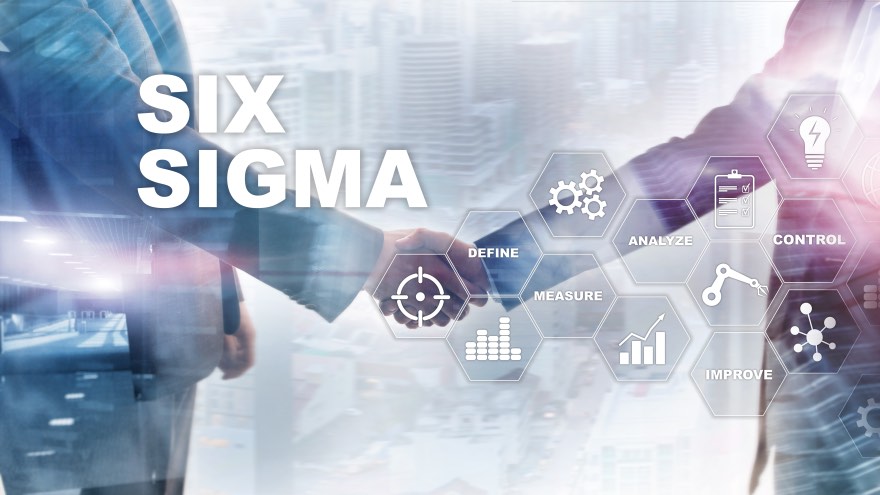Streamlining help desk setups is achievable in a number of ways, and a popular option at the moment is to apply the principles of Lean Six Sigma to overhauling IT ticketing systems.
To the uninitiated this could sound confusing, and even if you know a little about Lean Six Sigma as a method, you might not appreciate how it applies in this context.
With that in mind, we’ve put together a guide to explain and unpick the relationship between the Lean Six Sigma method and helpdesk solutions which serve IT users.
An Introduction to Lean Six Sigma
Before we dive into how a ticketing system can benefit from its application, let’s discuss what Lean Six Sigma involves and why it’s relevant to modern businesses.
Put simply, it’s an amalgamation of the QA methodologies of Six Sigma in its original form, alongside the philosophical aspects of the Lean movement.
It basically means that through team-oriented performance analysis, it’s possible to pinpoint and eliminate waste in business processes.
The term ‘waste’ itself can have different meanings, of course, and here it is defined as being an example of company resources that are being used without delivering value to the customer.
It’s a kind of East-meets-West mashup of ideologies developed in Japan and the US over the past half-century, and it can apply to everything from manufacturing to It help desks, as we’ll discover.
Speed in an IT service context
The main reason to roll out the Lean Six Sigma method when considering how ticketing is handled is to catalyze the entire experience, saving significant sums for the business and improving customer satisfaction significantly.
The quicker a ticket can be resolved, the more tickets a helpdesk team will be able to handle within a given window. Likewise if resolutions can be found at the top of the funnel, there’s less need to have additional team members on hand for when issues are escalated.
This is where the concept of process cycle efficiency (PCE) enters the picture. It’s a way of gauging how quickly a particular process can be completed, and what proportion of the activities involved actually add value to the customer.
It’s a tricky concept to tangle with at first, but the idea of having activities carried out by support staff which benefit only the organization and not the customer is central to optimization.
For example, let’s say you have a help desk setup where the first point of contact for customers is an employee who has a very basic level of knowledge and experience to call upon. While they might be able to handle simple problems, more often than not they will need to escalate a ticket to be dealt with by a more seasoned colleague.
This prolongs the time it takes for customers to get an answer, and only benefits the business in terms of staffing costs.
A leaner, more efficient and satisfying scenario would be one in which the majority of initial queries are solved there and then by the team member who replies first, because they have the abilities and understanding to tackle a wider range of likely customer concerns.
It matters less how long the total time to ticket resolution is in this scenario, but more how the PCE percentage stacks up. If a fix takes a while to find but the activities are all customer-focused, this is still in line with Lean Six Sigma.
It’s also an example of how investing in employee training improves productivity. There are costs to cope with, of course, but these are repaid many times over if you keep your help desk staff up to speed with the latest developments and challenges they’ll need to overcome.
Want to implement Lean Six Sigma principles for your business?
Contact Growth Hackers
Preventative measures as part of the picture
There is only so far that you can push efficiency when handling large numbers of IT support tickets, and so another important aspect of the Lean Six Sigma method is recognizing that you need to look beyond this to achieve further optimizations beyond this.
A good example of this is the introduction of knowledge bases and FAQs so that customers can find solutions to problems on a self-service basis. Eliminating or automating a point of contact that would otherwise need to be made with a flesh and blood employee is clearly efficient.
Questions asked by customers which aren’t part of your knowledge base can be dealt with at the time, and then added so that others can find the response they need if they are in the same situation in future.
Likewise as an FAQ section on your website will always be available, the opening hours of a help desk are not a limiting factor.
Top level strategic changes are needed
It’s good to consider how Lean Six Sigma can augment IT ticketing systems and their use in your businesses. But if you don’t also look at what more you can do to support and nurture team members who are at the coalface of fielding customer queries and complaints, this will be an empty gesture.
There are several aspects you need to get right in this context, such as:
Making customers aware of their support options
If you’ve got a knowledge base or FAQ solution, make sure this is given top billing on your website support page, rather than sticking your contact email address or telephone number front and center.
This promotional approach will ensure the self-service tools you’ve put in place for customers get harnessed as they should. Some will still prefer to wait for a reply from a person, of course, but most will be content to make do with your round-the-clock support setup.
Giving support team members more autonomy
Another cause of waste in an IT ticketing context occurs when employees are required to get in touch with a senior colleague before they can go through with a particular action. Again, this has no bearing on the outcome for the customer, but only serves to fit in with the organization’s hierarchy.
Trusting that you’ve chosen the right people and trained them to do the job at hand is better, and one of the main challenges of leadership. Here, it means you can afford help desk workers the power to make decisions and push forward with solutions to problems under their own steam.
Focusing on team mentality
While we just praised the impact of individual agent autonomy, there’s also an emphasis on collaboration in the Lean Six Sigma method.
This means that when teamwork is required to deliver value to the customer, employees must be encouraged to turn to it, rather than facing down a problem they can’t solve quickly on their own.
Aside from making this a policy in its own right, businesses can choose to incentivize behaviors which are team-oriented. This means doing away with rewarding individual agent performance in exchange for awards that promote group efforts.
Providing skill diversity
Feeding into the concept of teamwork playing a role here, there’s the idea that even with solid training programs, you can’t expect every person handling IT help desk tickets to be an expert on every conceivable area where problems might arise.
Thus it’s advised for businesses to branch out and employ people from across the skills spectrum, to give you as much coverage as possible and to further encourage collaboration.
A note on the needs of customers
The drive to provide value to customers with IT ticketing systems makes sense, but how can what they want be determined in the first place?
Understanding the needs of customers is complex, yet also provides a route forward for businesses that want to plug gaps in their knowledge bases and FAQs, as well as informing them of fixes that need to be implemented for the product in question.
The central concern for most users is ‘when’, meaning at what point will a solution be found for the issue raised. Thus we go back to the significance of timing as a measure of service quality and overall convenience.
A business may choose to also unpick why something went wrong, but it’s generally not efficient to do this within the support team itself, even if other departments have to keep staff in the loop so other customer questions can be answered in future.
Use the Lean Six Sigma approach to improve your customer experience!
Final Thoughts on Lean Six Sigma for IT Ticketing Systems
Trimming the fat out of the helpdesk experience will definitely result in leanness, but this should not be done at the expense of the quality of the experience for end users.
There is definitely something of a fine line to tread here, and it’s not unusual for businesses to go too far in the other direction at first.
However, the point is that with time, patience and persistent performance analysis, you can strike a balance which is cost-effective and convenient.
Most importantly, by measuring metrics in the first place, you’ll have indisputable evidence as to the impact of particular working processes and policies. This can make discussions about what changes to implement easier to steer, and bring long term benefits to all involved.
Growth Hackers is an award-winning remarketing agency helping businesses from all over the world grow. There is no fluff with Growth Hackers. We help entrepreneurs and business owners use Lean Six Sigma to improve help desk functions that promotes customer satisfaction, increase their productivity, generate qualified leads, optimize their conversion rate, gather and analyze data analytics, acquire and retain users and increase sales. We go further than brand awareness and exposure. We make sure that the strategies we implement move the needle so your business grow, strive and succeed. If you too want your business to reach new heights, contact Growth Hackers today so we can discuss about your brand and create a custom growth plan for you. You’re just one click away to skyrocket your business.








1 Comment
Thanks for the article. Very informative.